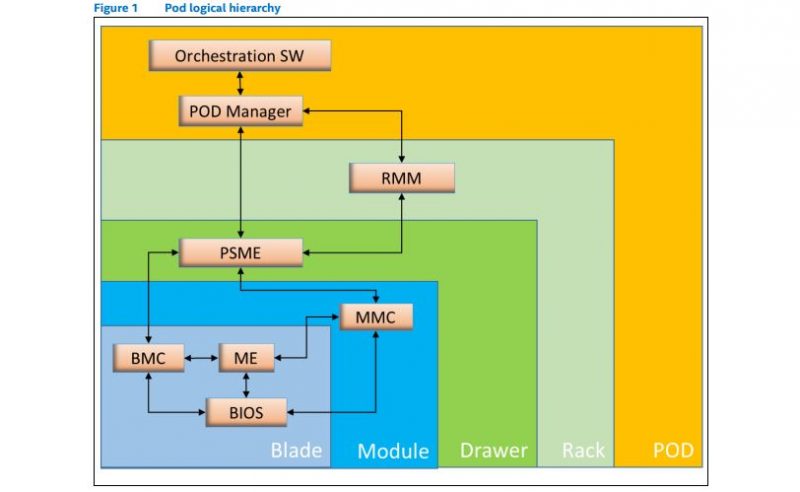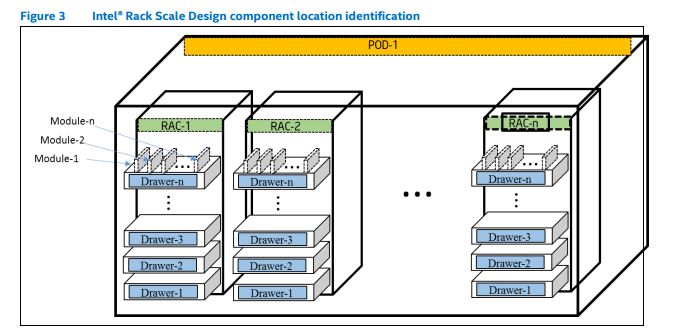Intel Rack Scale Design is now available online and ready for development. The data center equipment industry is primarily focused on hyper-scale deployments these days. As a result, we are seeing continued focus on projects such as Facebook’s Open Compute in various segments. These architectures are less focused on specialized hardware and instead focus on building large scale compute, memory, storage and networking pools. Looking forward from an industry perspective, we think that Intel RSD is going to have significant implications on the data center hardware and management software ecosystem.
As many have seen in recent STH reviews, we are pointing out systems that have Redfish management. Intel RSD utilizes Redfish and we expect to see wider adoption in the coming quarters.
Intel Rack Scale Design encompasses a way to manage large numbers of systems. The RSD hierarchy is Pod -> Rack -> Drawer -> Module -> Blade

While we are not going to go in-depth on the infrastructure, it is clear that the entire design is for large hyper-scale deployments:

Intel’s Rack Scale project has been discussed for some time. Recently, Intel has started to announce designs more publicly. We have already seen partners like QCT, Dell and Supermicro jump on the Rack Scale architecture design. Intel published a list of partners:
- American Megatrends Inc. (AMI): https://ami.com/intel-rsd-pr
- Dell: http://Del.ly/D13s49Opens in a new window
- Ericsson: http://cloudblog.ericsson.com/intel-rack-scale-design
- HPE: http://www8.hp.com/us/en/products/servers/scalable-systems/cloudline/index.html
- Inspur: http://www.inspursystems.com/products/incloud-rack/
- Lenovo: http://blog.lenovo.com/blog/entry/2277
- Quanta Cloud Technology (QCT): http://www.qct.io/
- Super Micro Computer Inc.: https://www.supermicro.com/solutions/SRSD.cfm
The code is available on Github and we hope to see significant contributions to the code base going forward.
Here is Intel’s Rack Scale Design reference document and a link to the Intel blog post:
Intel® Rack Scale Design Is Now Ready for Open Source Development




